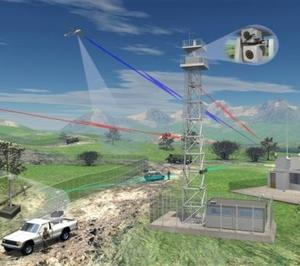Border securityMore resources allocated to border security without a clear measure of effectiveness
Billions of tax-payer dollars have been spent to secure the U.S-Mexico border from illegal immigration and drug trafficking. Yet, according to two federal oversight agencies, it is not clear whether the investments made are providing a favorable return. More importantly, there is no mechanism to measure the effectiveness or success of the investments made to secure the border.

Measures taken, but effectiveness remains undetermined // Source: khaberni.com
Billions of tax-payer dollars have been spent to secure the U.S-Mexico border from illegal immigration and drug trafficking. Yet, according to two federal oversight agencies, it is not clear whether the investments made are providing a favorable return. More importantly, there is no mechanism to measure the effectiveness or success of the investments made to secure the border.
The Miami Herald reports that the Government Accountability Office (GAO) and the Congressional Research Service (CRS) studied the effectiveness of the investments spent on border security, and both concluded that even with the amount of border data collected by the federal government, there is no adequate yardstick with which to measure the effectiveness of the enforcement efforts. Currently, DHS measures success of border enforcement by the number of apprehensions of illegal entrants on the Southwest border. Prior to 2011, the number of secured miles of the southern border was the measurement of success.
Rebecca Gambler, the director of homeland security and justice issues at GAO, and author of its report, says that “Apprehensions provide information only on activity levels, it cannot be used to inform resource allocation or to measure the success of the efforts.”
The CRS report was authored by Marc Rosenblum, a specialist in immigration policy who shared a view similar to Gambler’s in his testimony earlier this year before the House Subcommittee on Border Security and Maritime Security. “We do not know if a decline in apprehensions is a good thing because fewer people are attempting to enter or a bad thing because more of them are succeeding,” he said.
Despite the inability to track the number of people who cross the border illegally, the government has increased the amount of money and resources directed to border security, without measurable accountability. According to Customs and Border Protection (CBP), the number of Border Patrol agents doubled from nearly 10,000 in 2004 to 21,394 in 2012. During that same period, the miles of fencing along the U.S.-Mexico border increased 370 percent.
The recent immigration bill passed by the Senate in June would increase spending on border security by $46 billion. Testifying before a House of Representatives Homeland Security panel last month, Senator John Cornyn (R-Texas), who opposed the immigration reform bill, says of the bill: “one of the most massive wastes of funds in the history of the federal government.” Cornyn disapproves of the bill’s lack of a mechanism to ensure that the resources spent will be effective or properly implemented.
